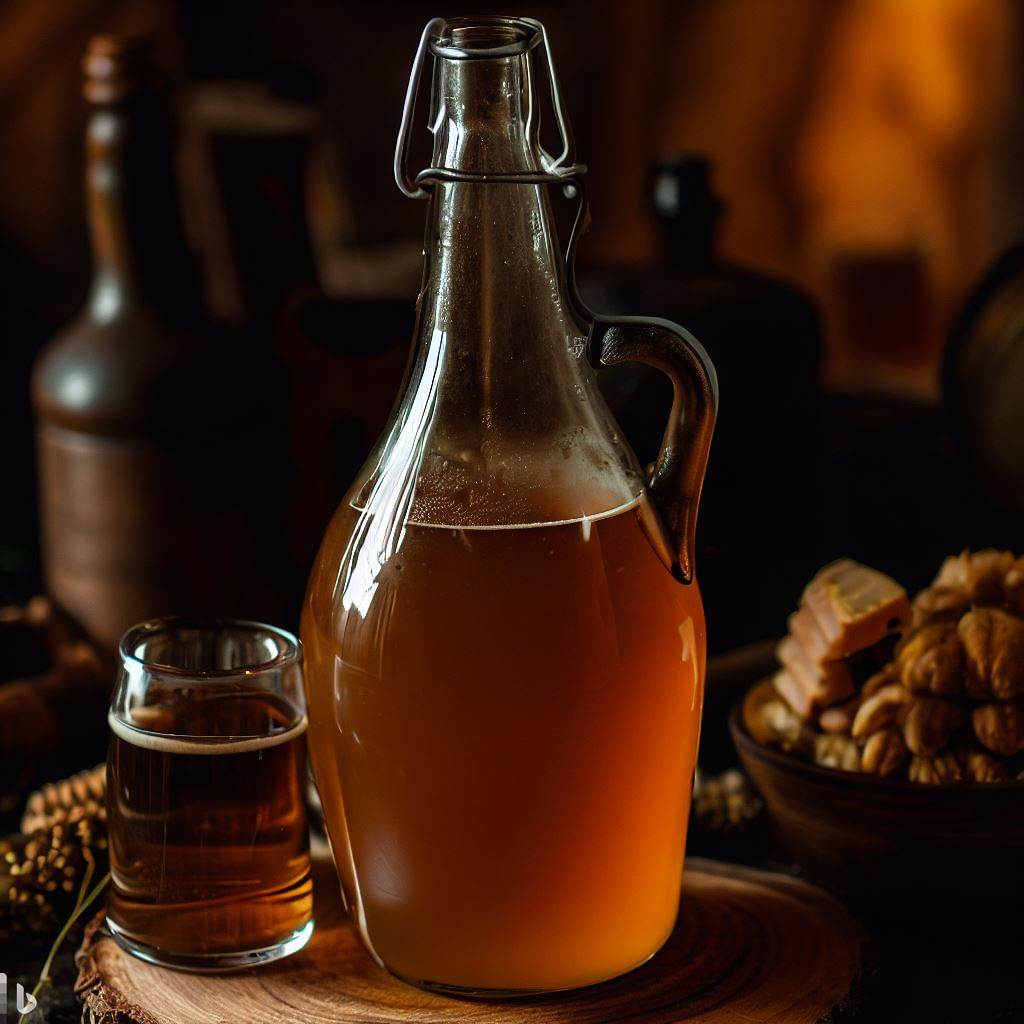Neil Gaiman, American Gods
“Okay,” said Shadow. “I tasted it. What was it?”
“Mead,” said Wednesday. “Honey wine. The drink of heroes. The drink of the gods.”
Shadow took another tentative sip. Yes, he could taste the honey, he decided. That was one of the tastes. “Tastes kinda like pickle juice,” he said. “Sweet pickle juice wine.”

Traditional Homemade Mead
Traditional homemade mead is a fermented honey beverage that can be customized to your desired sweetness. With simple ingredients like honey, water, and yeast, you can create a unique and delicious drink. The mead-making process requires patience during fermentation and aging, but the end result is a tasty, satisfying beverage to share with friends and family.
Ingredients
Equipment
Method
Sanitize Your Equipment
- Ensure a clean brewing environment by sanitizing all equipment, including the pot, fermenter, airlock, spoon, and measuring tools.
Prepare the Must
- In the sanitized pot, combine honey with one gallon of water. Stir until the honey is fully dissolved. Adjust sweetness by adding more honey if desired.
Enhance Body (Optional)
- Elevate the mead’s body by adding optional ingredients like raisins or tannin to the must. Mix well.
Rehydrate and Add Yeast
- In a separate container, rehydrate yeast following packet instructions. Add rehydrated yeast and yeast nutrient to the must.
Transfer to Fermenter
- Thoroughly stir the must, then transfer it to the sanitized fermenter. Attach the airlock, filled with water as per the manufacturer’s instructions.
Initiate Fermentation
- Place the fermenter in a dark, cool area (60°F to 75°F or 15°C to 24°C). Allow fermentation for 2 to 4 weeks or until it stops. Use a hydrometer to check specific gravity.
Racking Process
- After fermentation, use the sanitized racking cane and tubing to transfer the mead, leaving sediment behind. This process is known as racking.
Aging
- Allow the mead to age in the container for 3 to 6 months, racking once or twice to remove additional sediment.
Bottle Your Mead
- Transfer the aged mead to sanitized bottles, leaving remaining sediment behind. Cap or cork the bottles securely.
Final Aging
- For optimal flavor, store bottled mead in a cool, dark place for an additional 1 to 3 months before enjoying. Cheers! 🍯🍷
[mwai_chatbot id=”chatbot-0nm6f9″]
